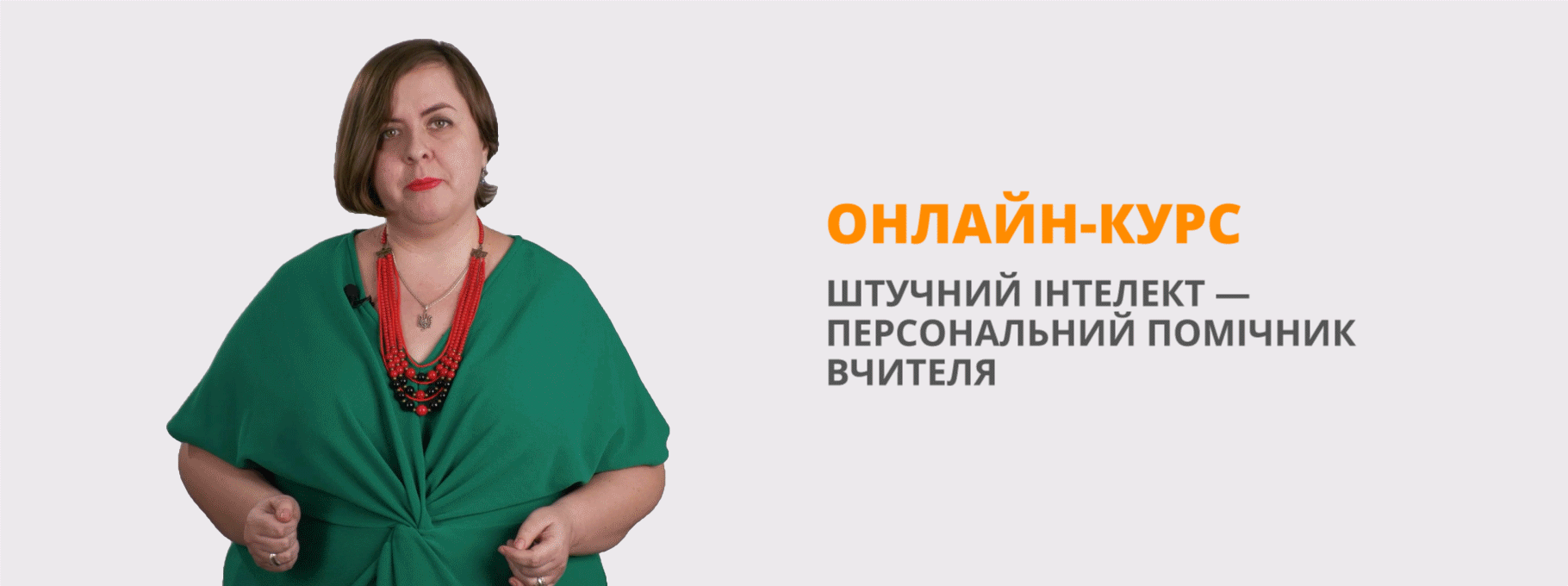Методичні рекомендації " Метод проектів як засіб реалізації комунікативного підходу при навчанні англійської мови"
закарпатський інститут післядипломної педагогічної освіти
Цуперяк Тетяна Василівна
Метод проектів як засіб реалізації комунікативного підходу при навчанні англійської мови
(навчально-методичні рекомендації)
Цуперяк Т.В. Метод проектів як засіб реалізації комунікативного підходу при навчанні англійської мови: навчально-методичний посібник. – Чорнотисянська загальноосвітня школа І-ІІІ ступенів. – Ужгород,2016р. – 53с.
Сучасна методика викладання іноземної мови приділяє велику увагу творчій діяльності учнів. Метод проектів дозволяє учням проявити самостійність у виборі джерел інформації, способу її викладу і презентації. У цій роботі представлені аспекти використання методу проектів, етапи і види роботи підчас підготовки, наведені приклади. Для вчителів англійської мови.
Рецензенти : Решетар О. В., старший викладач кафедри англійської філології факультету іноземної філології Ужгородського національного університету
Тріфан М. С., методист Закарпатського інституту післядипломної педагогічної освіти
Методична розробка (навчально-методичні рекомендації) схвалена науково-методичною радою Закарпатського інституту післядипломної педагогічної освіти.
Протокол № 6 від 23.12.2016року
CONTENTS
1.Project work in developing communicative skills
1.2 Pedagogical references of project work in the past
1.3 Project work in a language classroom
1.6 The advantages of project work
1.9.3 Research and data collection
1.9.4 Preparation of data presentation
1.10 IT and multimedia devices in project work
2.The implementation of project work into practice
2.1. Lesson plan 1. Life for people
2.1. Lesson plan 2. Environmental Protection
2.5. Progect Making a sandwich
2.6. Project Adverticing: pros and cons
2.7. RAINBOW. Summer camp project.
INTRODUCTION
Tell me and I’ll forget.
Show me and I may not remember
Involve me and I’ll understand
native American saying
Проектна методика є новою педагогічною технологією і являє собою можливу альтернативу традиційній класно-урочній системі. Необхідність застосування проектної методики в сучасній шкільній освіті зумовлена очевидними тенденціями в освітній системі до більш повноцінного розвитку особистості учня, його підготовки до реальної діяльності. Вона забезпечує не тільки засвоєння навчального матеріалу, але й інтелектуальний і моральний розвиток учнів, їхню самостійність, доброзичливість до вчителя і між собою, комунікабельність, бажання допомогти іншим. Проектна методика ґрунтується на особистісно- діяльнісному підході, що означає переорієнтацію всього навчального процесу на постановку і вирішення самими школярами пізнавально-комунікативних і дослідницьких завдань. Це дозволяє розглядати проектне навчання як одну з найбільш продуктивних і інтенсивних методик, що сприяє досягненню високих результатів навченості й освіченості особистості.
Проектний метод – це дидактичний засіб активізації пізнавальної діяльності учнів, розвитку креативного мислення й формування визначених в них особистісних якостей. Три «кити», на яких тримається дана технологія, - це самостійність, діяльність, результативність.
Великою перевагою проектної діяльності є вміння, які набувають учні, а саме:
- планувати свою роботу, попередньо прораховуючи можливі результати;
- використовувати багато джерел інформації;
- самостійно збирати і накопичувати матеріал;
- аналізувати, співставляти факти, аргументувати свою думку;
- приймати рішення;
- розподіляти обов’язки, взаємодіяти один з одним;
- створювати "кінцевий продукт";
- представляти створене перед аудиторією;
- оцінювати себе та інших.
Метод проектів – педагогічна технологія, зорієнтована не на інтеграцію фактичних знань, а на їх застосування і набуття нових.
Структура різних типів проектів (за Є.Полат)
За методом або видом діяльності, яка домінує в проекті
1.Дослідницькі
2.Творчі
3.Ігрові
4.Інформаційні
5.Практично орієнтовані
Розглядаючи можливості інтеграції проектів у процес викладання англійської мови, можна виділити три основні підходи. Проект може:
-використовуватись як одна із форм позакласної роботи;
-служити альтернативним способом організації навчального курсу;
-інтегрувати в традиційну систему викладання англійської мови.
Проектний метод у компетентнісно спрямованій освіті—це інструмент, який створює унікальні передумови для розвитку ключових компетенцій і самостійності учня в осягненні нового, стимулюючи його природну допитливість і творчий потенціал, підвищуючи інтерес до вивчення англійської мови.
У чому сила методу проектів? у тому, що це метод поєднання теорії з практикою, що він пов’язує всю нашу навчальну і виховну роботу з життям.
Проект передбачає чітке формулювання мети—результату в розв’язанні учнем життєвої проблеми. Проектна діяльність допомагає молодій людині включитися в активну соціальну дію, оволодівши здатностями через проект власного розвитку змінювати цей світ. У проектній діяльності докорінно змінюються відносини «учитель—учень».
Мета проектної роботи полягає в можливості кожної дитини проявити себе якнайкраще. свої творчі здібності, використовуючи при цьому набуті знання й навички з лексики, граматики, тощо, поділитися життєвим досвідом, розкрити в собі й своїх друзях нові таланти, позбутися багатьох комплексів, мати на все свій власний погляд і не боятися його відстояти, навчитися слухати думки інших і поважати їх. До даної роботи я залучаю абсолютно всіх учнів, не зважаючи на їх рівень знань або вік. Бо тут головнішим є сам процес роботи, а не її результат.
Метод проектів сприяє забезпеченню умов для розвитку індивідуальних здібностей і нахилів дитини, учить творчо мислити та інтелектуально вдосконалюватись. Він орієнтує учнів на самостійну, парну чи групову діяльність та активізацію навчання, при цьому реалізується творчий підхід до розв’язання певної проблеми. Відбувається соціалізація особистості, стимулюється ініціативність, зростає творчий потенціал учня. Цінним є поєднання індивідуальних завдань з елементами колективного пошуку, розвиток комунікативних якостей.
1.Project work in developing communicative skills
The project work at schools is used across the curriculum. We can use projects in a school subject separately or we can join more school subjects in one project. Sometimes we call „project work“ every activity that is different from a traditional way of teaching and learning.
According Oxford Advanced Learner´s Dictionary (2000) "project" is:
- planned work – a planned piece of work that is designed to find information about sth, to produce sth new, or to improve sth.
- school/college work – a piece of work involving careful study of a subject over a period of time, done by school or college students.
The definition of "project" in Oxford Wordpower Dictionary (2006) is:
- a piece of work, often involving many people, that is planned and organized carefully,
- a piece of school work in which the student has to collect information about a certain subject and then write about it.
In Advanced Learner´s English Dictionary, Harper Collins Publishers, "project" is "a task that requires a lot of time and effort."
Cambridge Advanced learner´s Dictionary (2003) defines "project" as:
- A piece of planned work or an activity which is completed over a period of time and intended to achieve a particular aim.
- A study of a particular subject done over a period of time, especially by students.
The most detailed definition of "project" we can find in The New Penguin English Dictionary (2000):
- A specific plan or design; a scheme
- A planned undertaking; e. g. a) a piece of research with a definite plan. b) a large or complex piece of work, esp. one involving joint effort. c) a task or problem engaged in using by a group of a pupils, esp. to supplement and apply classroom studies.
In educational context, the project work should be pupil-centred activity, no teacher-centred or syllabus-centred one. The pupils have to understand why they make a project and how it is useful for them. The best way is when they can choose the topic of the project themselves. They usually work in groups and they develop their social skills to cooperate and communicate together. They choose the way of work, divide tasks and agree on the output of the project. As one of the most important rules of the project work I consider the fact that the pupils are responsible for their work on their project and for their results. At the end the pupils present the result of their project and the teacher evaluates not only the project itself but also the work of each pupil on the project and the cooperation among the pupils in their groups.
Projects and project work have become more common nowadays but they are not new ideas in education.
In Comenius writings he points out a child´s personality was emphasized, a child is considered as a jewel and he draws attention to internal potential of a child and possibilities of his development. He also emphasizes advisability and benefit of the curriculum for children and as a motivation he recommends something what could interest them and capture their attention. (Comenius, sec. cit. In Kratochvílová 2009, p. 24, translation by author)
We can find the roots of project work in pedagogical references of thinkers of 18th and 19th century – J. J. Rousseau, J. H. Pestalozzi, F. W. A. Frobel, C. Freinet. (Kratochvílová 2009, p. 24, translation by author)
J. J. Rousseau´s thoughts have coherence with current conception of education. „Rousseau points out that the method of development from childhood to adulthood is through interaction of the natural child with his environment. The child is developed through his experience, and experience is defined as everything that happens to him through his contact with his environment.“ (Stockton 1920, p. 8)
Rousseau also emphasized the individuality of a child, his effort to invent, to solve new situations, his tendency to think. Rousseau believed in a great potencional of a human being and possibility of his future development. (Kratochvílová 2009, p. 25, translation by author)
J. H. Pestalozzi was influenced by Rousseau´s work, he developed Rousseau´s principles of education and „was the first to get them at least partially into practice .“ (Stockton, p. 11). Pestalozzi defined education as „the harmonious development of all the powers and capacities of the human being.“ (Stockton 1920, p. 12). Both Rousseau and Pestalozzi considered the child as the centre of education and they claimed that „education must be with direct reference to the natural development of the whole child, physical, mental, and moral.“ (Stockton 1920, p. 12)
Pestalozzi´s followers, W. A. Frobel and C. Freinet, also tried to create the natural environment at schools in which the personality of a child was stressed, his independence and interests were taken into consideration and thus the child could learn naturelly. Frobel considered games, songs and practical work as the important part of education. Children played, sang and did various activities while they also heard literacy and historical stories (Stockton 1920, p. 19).
I find Freinet´s ideas of education process more interesting because I try to realize the projects in my English classes in a similar way. „His organization of education process, the creating of the school printer-office, development of pupils´ correspondence on the interclass and interschool levels, publishing a school magazine is very close to the method of project work and nowadays some of teachers together with pupils realize their projects on the mentioned possibilities. Publishing class or school magazines, correspondence leading out of school environment, and etc., become part of realization of projects at school.“ (Kratochvílová 2009, p. 25, translation by author)
At the end of 19th century and at the beginning of 20th century the pragmatic philosophy originated in the U. S. A. and with its principles it influenced education, as well. Kratochvílová says that „pragmatic pedagogy understands education as the tool of solving problems which people encounter in their everyday lives.“ (Kratochvílová 2009, p. 25, translation by author). The main representatives of pragmatic pedagogy are J. Dewey and W. H. Kilpatrick.
Legutke and Thomas say that „Dewey and Kilpatrick had already laid the theoretical and practical foundations of learning by and through experience. For them the educational project as „a whole-hearted purposeful activity“ (Kilpatrick, 1918), taking place in a social environment upon which it has a significant impact, was seen as a new way of bringing about a more democratic society. Kilpatrick´s essay „The Project Method“ (1918) spelled out the consequences of Dewey´s programmatic study „Democracy and Education“ (1916). He pointed out that a learning process was required which not only prepared young people to be responsible citizens, but which mirrored in its very forms of operation an experimental society of cooperating individuals.“ (Legutke and Thomas 1991, p. 157)
Dewey believed that „the school is just a bit of real life, not a place in which to prepare for life. The aim of education is focused not upon mere knowledge, but upon doing, and more than that, upon efficient social doing – social efficiency.“ (Stockton 1920, p. 40) The method of teaching and learning process is to be „the method of experience – of interaction of the child and experience, or of the child and the curriculum.“ (Stockton 1920, p. 41) Dewey defined the aims of education as the effort of natural development and the usage and transmission of acquired experiences and education as enrichment of every human being. (Kratochvílová 2009, p. 27, translation by author)
Kratochvílová says that „in this conception of curriculum we find the roots of project work – solving a problem, looking for the sense of activities and leading to acquired experiences and the realization of purposeful work.“ (Kratochvílová 2009, p. 27-28, translation by author).
Kilpatrick, Dewey´s follower, „had merit in implementation of pragmatic pedagogy to schools and enforcement of new forms of curriculum and teaching method based on solving problems, so called the project method. He also suggested the chart of a project: determination of the aim, planning, realization and evaluation.“ (Kratochvílová 2009, p. 28, translation by author)
I agree with Dewey and Kilpatrick´s education principles and I consider them as very important in education process mainly from the view of the pupils to motivate them to learn.
The thoughts of the project method spread into other countries and they attracted attention of our teachers, like J. Uher, V. Příhoda, S. Vrána.
At the beginning of 20th century, the reformative efforts in education, which were based on the thoughts of project method, appeared in our country and influenced the thinking of Czech teachers who also returned to Comenius ideas. The reformative efforts and changes at schools were developed till the beginning of the Second World War when the reformative movement was stopped. After the war, the victory of Communist Party in the elections meant the end for all reformative efforts.
After 1989, new reformative movement started to enforce the necessity of changes in education. The process to leave the methods based on the amount of knowledge without practice and experience for pupils has been started. The project work has become popular in educational process at schools and we hardly find a school in which teachers and pupils do not realize any projects. According to my pedagogical experience, at schools where I have taught, the teachers usually prepare and organize the whole conception of the projects which takes them a lot of time and work and they usually give a little space for pupils´ imagination, activity and experience. As a teacher, I do not want to follow it. Inspired by the thoughts of our teacher Mrs. Kratochvílová at the faculty, I try to innovate the project work in my lessons by using new and modern technologies to capture my pupils´ attention.
Project work in the language classroom is the opportunity for learners to develop their language skills, it encourages learners to use the foreign language and motivates them. Moreover, it develops the learners´ social skills, the ability to cooperate together, because they often work in groups on their project, and their sense for responsibility for their work.
Haines says, „in the context of language learning, projects are multi-skill activities focusing on topics or themes rather than on specific language targets.“ (Haines 1989, p. 1). The author continues that „because specific language aims are not prescribed“ (Haines 1989, p. 1), the learners concentrate on reaching the targets „with opportunities to recycle known language and skills in a relatively natural context.“
Fried-Booth says that „most organized language learning takes place in the classroom. What is taught in the classroom may in theory be useful, but usefulness does not always extend to practice. Often, there is a gap between the language the students are taught and the language they in fact require. It is this gap that project work can help to bridge.“ (Fried-Booth 1986, p. 5).
I agree with both Haines and Fried-Booth, the pupils can use and develop all language skills especially in those projects that enable practical usage of the aim language, the exchange of personal letters, emails etc., communication "face to face" and other activities to find the reason why they should learn the foreign language. I think that it is important to persuade the pupils that they can improve their language knowledge not only by travelling abroad, but also at school by making such activities like projects.
Fried-Booth differentiates between full-scale projects and bringing and motivating activities (Fried-Booth 1986, p. 6). She says that „they are, of course, closely linked, since the motivating activities are a form of preparation for full-scale projects. The main difference between the two it that motivating activities are restricted to the classroom, while project work in extended beyond the classroom.“ (Fried-Booth 1986, p. 6)
Haines divides the projects into four main categories (Haines 1989, p. 1):
- Information and research projects
- Survey projects
- Production projects
- Performance and organizational projects
According to Legutke and Thomas (1991, p. 161-165) the projects in foreign language learning are divided into three groups:
- Encounter projects
- Text projects
- Class correspondence projects
Encounter projects enable the pupils the direct contact with native speakers, as a short visit, a class trip or a school exchange. In text projects, the pupils work with various materials, like literature texts, newspapers and magazines, video and audio materials and etc. Class correspondence projects combines encounter with native speakers and work with written and visual materials, such as letters, audio-letters, video-letters, photo stories. (Legutke and Thomas 1991, p. 161 – 165).
According as Fried-Booth and Haines named the groups of projects, I think that they think of the projects as various activities which the pupils and the students learning English can do in English classes and the direct contact with native speakers is not essential. By contrast Legutke and Thomas´s project groups relate to „face-to-face“ (1991, p. 161) communication with native speakers or direct work with sources in the target language.
I agree with Legutke and Thomas but according to my experience the encounter projects need not be with native speakers essentially, the project between two groups of non-native-English-speaking pupils can be very successful and motivating for both of groups. The advantage of such a project is that both groups of the pupils can be at the same level of learning English.
Project work involves multi-skill activities which focus on a theme of interest rather than specific language tasks. In project work, students work together to achieve a common purpose, a concrete outcome (e.g., a brochure, a written report, a bulletin board display, a video, an article for a school newspaper, etc). Haines identifies four types of projects:
1. Information and research projects which include such kinds of work as reports, displays, etc.
2. Survey projects which may also include displays, but more interviews, summaries, findings, etc.
3. Production projects which foresee the work with radio, television, video, wall newspapers, etc.
4. Performance/Organizational projects which are connected with parties, plays, drama, concerts, etc.[1,65]
What these different types of projects have in common is their emphasis on student involvement, collaboration, and responsibility. In this respect, project work is similar to the cooperative learning and task-oriented activities that are widely endorsed by educators interested in building communicative competence and purposeful language learning. However, it differs from such approaches, it typically requires students to work together over several days or weeks, both inside and outside the classroom, often in collaboration with speakers of the target language who are not normally part of the educational process.
Students in tourism, for example, might decide to generate a formal report comparing modes of transportation; those in hotel/restaurant management might develop travel itineraries. In both projects, students might create survey questionnaires, conduct interviews, compile, sort, analyze, and summarize survey data and prepare oral presentations or written reports to present their final product. In the process, they would use the target language in a variety of ways: they would talk to each other, read about the focal point of their project, write survey questionnaires, and listen carefully to those whom they interview. As a result, all of the skills they are trying to master would come into play in a natural way.
Let us consider, for example, the production of a travel brochure. To do this task, tourism students would first have to identify a destination, in their own country or abroad, and then contact tourist agencies for information about the location, including transportation, accommodations in all price ranges, museums and other points of interest, and maps of the region. They would then design their brochure by designating the intended audience, deciding on an appropriate length for their suggested itinerary, reviewing brochures for comparable sites, selecting illustrations, etc. Once the drafting begins, they can exchange material, evaluate it, and gradually improve it in the light of criteria they establish. Finally, they will put the brochure into production, and the outcome will be a finished product, an actual brochure in a promotional style. Projects allow students to use their imagination and the information they contain does not always have to be factual. [1,80]
One of the great benefits of project work is its adaptability. We can do projects on almost any topic. They can be factual or fantastic. Projects can, thus, help to develop the full range of the learners’ capabilities. Projects are often done in poster format, but students can also use their imagination to experiment with the form. It encourages a focus on fluency.
Each project is the result of a lot of hard work. The authors of the projects have found information about their topic, collected or drawn pictures, written down their ideas, and then put all the parts together to form a coherent presentation.
The projects are very creative in terms of both content and language. Each project is a unique piece of communication, created by the project writers themselves. This element of creativity makes project work a very personal experience. The students are writing about aspects of their own lives, and so they invest a lot of themselves in their project.
Project work is a highly adaptable methodology. It can be used at every level from absolute beginner to advanced. There is a wide range of possible project activities, and the range of possible topics is limitless.
Positive motivation is the key to successful language learning, and project work is particularly useful as a means of generating it.
Another point is that this work is a very active medium like a kind of structured playing. Students are not just receiving and producing words, they are:
• collecting information;
• drawing pictures, maps, diagrams, and charts;
• cutting out pictures;
• arranging texts and visuals;
• coloring;
• carrying out interviews and surveys;
• possibly making recordings, too.
Lastly, project work gives a clear sense of achievement. It enables all students to produce a worthwhile product. This feature of project work makes it particularly well suited to the mixed ability class, because students can work at their own pace and level. The brighter students can show what they know, unconstrained by the syllabus, while at the same time the slower learners can achieve something that they can take pride in, perhaps compensating for their lower language level by using more photos and drawings. [14,320]
A foreign language can often seem a remote and unreal thing. This inevitably has a negative effect on motivation, because the students do not see the language as relevant to their own lives. If learners are going to become real language users, they must learn that English is not only used for talking about British or American things, but can be used to talk about their own world.
Firstly, project work helps to integrate the foreign language into the network of the learner’s own communicative competence. It creates connections between the foreign language and the learner’s own world. It encourages the use of a wide range of communicative skills, enables learners to exploit other spheres of knowledge, and provides opportunities for them to write about the things that are important in their own lives.
Secondly, it helps to make the language more relevant to learners’ actual needs. When students use English to communicate with other English speakers, they will want, and be expected, to talk about aspects of their own lives – their house, their family, their town, etc. Project work thus enables students to rehearse the language and factual knowledge that will be of most value to them as language users.
Another important issue in language teaching is the relationship between language and culture. It is widely recognized that one of the most important benefits of learning a foreign language is the opportunity to learn about other cultures and English, as an international language, should not be just for talking about the ways of the English – speaking world, but also as a means of telling the world about one’s own culture. [16,157]
There is a growing awareness among language teachers that the process and content of the language class should contribute towards the general educational development of the learner. Project work is very much in tune with modern views about the purpose and nature of education:
1. There is the question of educational values. Most modern school curricula require all subjects to encourage initiative, independence, imagination, self- discipline, co-operation, and the development of useful research skills. Project work is a way of turning such general aims into practical classroom activity.
2. Cross-curricula approaches are encouraged. For language teaching this means that students should have the opportunity to use the knowledge they gain in other subjects in the English class.
So we can come to the conclusion that project work activities are very effective for the modern school curricula and should be used while studying.
Although recommendations as to the best way to develop projects in the classroom vary, most are consistent with the eight fundamental steps. Though the focus is upon the collaborative task, the various steps offer opportunities to build on the students’ heightened awareness of the utility of the language by working directly on language in class. In short, language work arises naturally from the project itself, ‘developing cumulatively in response to a basic objective, namely, the project’ [2,57]. Strategically orchestrated lessons devoted to relevant elements of language capture students’ attention because they have immediate applicability to their project work.
Step I: Defining a theme.
In collaboration with students, we identify a theme that will amplify the students’ understanding of an aspect of their future work and provide relevant language practice. In the process, teachers will also build interest and commitment. By pooling information, ideas, and experiences through discussion, questioning, and negotiation, the students will achieve consensus on the task ahead.
Step II: Determining the final outcome.
We define the final outcome of the project ( e.g., written report, brochure, debate, video) and its presentation (e.g., collective or individual). We agree on objectives for both content and language.
Step III: Structuring the project.
Collectively we determine the steps that the students must take to reach the final outcome and agree upon a time frame. Specifically, we identify the information that they will need and the steps they must take to obtain it (e.g., library research, letters, interviews, faxes). We consider the authentic materials that the students can consult to enhance the project (e.g., advertisements from English magazines, travel brochures, menus in English, videos, etc.). Decide on each student’s role and put the students into working groups. If they are not used to working together, they may need help in adapting to unsupervised collaboration. They may also be a little reluctant to speak English outside the classroom with strangers.
Step IV: Identifying language skills and strategies.
There are times, during project work, when students are especially receptive to language skills and strategy practice. We consider students’ skills and strategy needs and integrate lessons into the curriculum that best prepare students for the language demands associated with Steps V, VI, and VII.
1. We identify the language skills which students will need to gather information for their project (Step V) and strategies for gathering information. If students will secure information from aural input, we show them how to create a grid for systematic data collection to facilitate retrieval for comparison and analysis.
2. We determine the skills and strategies that students will need to compile information that may have been gathered from several sources and/or by several student groups (Step VI).
3. We identify the skills and strategies that students will need to present the final project to their peers, other classes, or the headmaster (Step VII). As they prepare their presentations, they may need to work on the language (written or spoken) of formal reporting.
Step V: Gathering information.
After students design instruments for data collection, we have them gather information inside and outside the classroom, individually, in pairs, or in groups. It is important that students ‘regard the tracking down and collecting of resources as an integral part of their involvement’ in the project.
Step VI: Compiling and analyzing information.
Working in groups or as a whole class, students should compile information they have gathered, compare their findings, and decide how to organize them for efficient presentation. During this step, students may proofread each other’s work, cross-reference or verify it, and negotiate with each other for meaning.
Step VII: Presenting final product.
Students will present the outcome of their project work as a culminating activity. The manner of presentation will largely depend on the final form of the product. It may involve the screening of a video; the staging of a debate; the submission of an article to the school newspaper or a written report to the headmaster; or the presentation of a brochure to a local tourist agency or hotel.
Step VIII: Evaluating the project.
In this final phase of project work, students and the teacher reflect on the steps taken to accomplish their objectives and the language, communicative skills, and information they have acquired in the process. They can discuss the value of their experience and its relationship to future vocational needs. They can also identify aspects of the project which could be improve d and/or enhanced in future attempts at project work.[2,105]
First of all, we should always consider the students’ long-term language needs. Though it may be difficult, we should try to identify the social and professional contexts that they will have to function in and to think of projects students can undertake that require them to use the language in a way that resembles their ultimate use.
Secondly, we should consider the linguistic skills that students will have to employ in these contexts. Projects that require practice in those skills would be most useful. If students have to manage a lot of fax traffic, the project’s subsidiary tasks should involve those types of activity.
Thirdly, consider what is feasible. One popular project involves querying travelers as they pass through an airport terminal or major train station.
Although an airport/train station is the ideal place to ask questions and to find English speakers to answer them, there may be no international airport or major train station at hand to use for this purpose. If this is the case, there is no point in insisting that students interview native speakers of English. At the same time, teachers should not abandon the idea of a project altogether if ideal circumstances are not available. Since most professional conversation in English is probably carried on among non-native speakers, students will benefit equally from projects that put them in touch with speakers of varieties of world English. In addition, there are numerous sources of material in English that can be obtained at no cost with a formal letter of request and then sifted, compared, and summarized. In other words, we should not give up simply because a pool of native speakers or authentic printed material is unavailable close to home.
Finally, we should do a lot of planning. Although the project approach requires student input and decision-making in the initial phase of project definition, the teacher’s understanding of the outcome and the steps needed to achieve project objectives is crucial. Therefore, before introducing the project, the teacher should identify topics of possible interest, the educational value of the outcome, corresponding activities, and the students’ material or cognitive needs in conducting the project. There are many schools where curricula demands, the lack of equipment, scheduling problems, issues of insurance, administrative rigidity, and the like preclude instructional innovations like project work.[6,240]
Incorporating project work into more traditional classrooms requires careful orchestration and planning. Students who are not used to functioning autonomously, who may even be accustomed to close control and monitoring, may find it hard to take control of their own activity. Therefore, we should ease them into it by planning cooperative, small group work beforehand.
Similarly, many teachers encounter resistance from school administrators when they challenge the status quo with the project approach. Traditional schools that are governed by strict curricula guidelines and systematic testing are frequently not the most receptive environments for project work. Some administrators, for example, may complain that the elaborate activities associated with project work do not prepare students for required exams. Yet, if the underlying objective of the educational process is to build the students’ ability to use the language fluently in novel situations, project work will carry them a lot closer to meeting that objective than more conventional work on grammar, vocabulary, and pronunciation.
Project work can only be effective when teachers relax control of their students temporarily and assume the role of guide or facilitator. The teacher can play an important role by diligently overseeing the multiple steps of project work, establishing guidelines, helping students make decisions, and providing instruction in the language when it is needed. Giving students freedom to immerse themselves in the project can lead to motivated and independent learners, but it requires a certain flexibility on the part of the instructor if students are to benefit maximally.
The projects are considered by the pupils as more enjoyable way of learning and I think these are common advantages of using project work in the lessons: to motivate the pupils to learning, to be responsible for own learning and the possibility of using taught language in a real life.
As Fried-Booth (1986, p.7) says that "by encouraging students to move out of the classroom and into the world, project work helps to bridge the gap between language study and language use." She continues that "it is, therefore, a valuable means of extending the communicative skills acquired in the classroom."
She argues two ways of language learning:
- language learning which is based on tasks given by the teacher when "the teacher defines language and students practice language and task"
- language learning in project work in which "students become responsible for their own learning. They select and devise project, with the teacher acting as coordinator." They deal with the task and language requirements emerge from the task.
She also claims that "the motivation lies in the project itself" because the learner "is offered the opportunity of using the language skills already acquired, in a situation which is new, challenging, and real." (Fried-Booth 1986, p. 8) The project work offers not only groovy and expectable events but also unknown and unexpectable situations and thereby it creates the place for development.
Hutchinson says „that project work captures better than any other activity the two principal elements of a communicative approach“ (Hutchinson 1991, p. 11) and he argues:
- a concern for motivation, that is how learners relate to the task
- a concern for relevance, that is how learners relate to the language
-
Hutchinson says that „positive motivation is the key to successful language learning, and project work is particularly useful as a means of generating this“ (Hutchinson 1991, p. 11). Project work is very motivating because:
- it is very personal - the pupils are writing about „themselves, their lives, their town, their dreams and fantasies, their own research into topics that interest them.“ (Hutchinson 1991, p. 11) He continues that because the project is very personal experience for the pupils, its meaning and presentation are very important for them and that is why they put a lot of effort into doing it right,
- the pupils are „learning through doing“ (Hutchinson 1991, p. 11) – they are not just receiving and producing words, they are also collecting information, drawing pictures, cutting out pictures, arranging texts, colouring, carring out interviewing and surveys etc.,
- project work gives the sense of achievement and it enables the pupils to produce the worthwhile product. It also enables to the pupils to work on their own level and achieve their goals. Better pupils can express what they know and slower pupils can be successful by using more photos and pictures.
-
Hutchinson (1991, p. 11) argues that a foreign language can be unreal for the pupils because they don´t usually need it in their own lives. It could be a negative motivation, but if they become real language users, they do not have to use it only for talking about English or American things and they can talk about their own lives and interests. That means:
- project work helps to integrate the foreign language into the learner´s own world , encourages the use of communicative skills and provides the opportunities to write about things which are important for them,
- it enables to make the language more relevant to the pupils´ needs,
- it enables the relationship between the language and the culture, while the pupils learn a foreign language, they learn about other cultures.
I agree with the advantages of project work mentioned by Hutchinson. Fried-Booth (1986, p. 8) suggests similar benefits and she also says that "in project work the skills are not treated in isolation, but combined" and the pupils use them simultaneously.
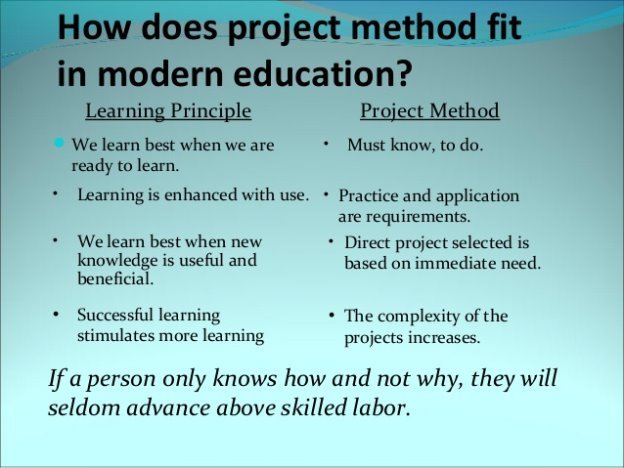
1
I think that the most important benefit of project work for the pupils is that it enables them the contact with real world in which they use the target language that they have learnt.
Based on my teaching experience, I can mention other benefits of project work to the pupils:
- They work on their own level and can achieve a goal regardless how good they are at the target language, which is very motivating for them.
- They work with a wider range of materials than their textbook offers.
- They improve their communicative and social skills, such as cooperating in groups and developing their personality, acting with other pupils in a group, listening to others and expressing their own opinions, stating their cases and attitudes, solving the problems and etc.
- They deal with problems which they are interested in and they learn to solve them.
- They use new ICT in making projects, such as creating power point presentations as the product of their projects, they can communicate through ICT with the pupils of other school from a foreign country etc.
- They are taught to be responsible for their work and its results.
- The pupils´ efforts and joining the project are more important than linguistic accuracy.
To compare to Haines (1989, p. 3), I mentioned some benefits as he argues, but his classification is more extensive and more exact than mine:
- Contact with reality
- Projects are participatory activities – he says that „student involvement in making choices and decisions tends to increase their motivation and interest.“
- Projects cater for all abilities within a class – he argues that students of different abilities can work on tasks of equal importance and use their talents which are valuable for the success of a project.
- Projects re-integrate language – he says that for common teaching purposes a foreign language is divided into constituent parts like structures, functions, vocabulary, pronunciation and skills. In projects, those parts of a foreign language are re-integrated in students´ minds. This is important for students to be more confident in using the language in real situations.
- Projects establish a context which balances the need for fluency and accuracy – he argues that projects are not opportunities for practicing fluency but for successful communication it is in students´ interests to produce the final product of the project which is both accurate and fluent.
- Projects are a break with routine – as the most important benefit of project work is that it allows students to relax.
--In project method of teaching the role of a teacher is that of a guide, friend and philosopher.
-- The teacher is not a dictator or a commander but a working partner
--The teacher encourages his students to work collectively and co-operatively
-- He also helps his students to avoid mistakes
-- He makes it a point that each member of the group contributed something to the completion of the project
Although the responsibility for project work is given to the pupils, a teacher´s role is not insignificant. In the project, the teacher is acting as advisor (or consultant) and coordinator. Making a project does not mean „more work“ for the teacher if he is able to plan and organize it well and he makes the pupils to take the responsibility for the end product.
The teacher´s role according to Haines (1989, p. 4):
- Initiating role: the teacher decides when it is the suitable time for a project and how long it should last. Then he should also „introduce a broad discussion topic which may develop naturally into a project.“
-
During the project:
- the teacher is an advisor being prepared to advice and help if the pupils ask for it,
- as a referee he is assisting to solve out arguments and differences of opinion,
- as a chairperson, „from time to time groups will report their activities to the whole class. On these occasions the teacher can take the role of an objective chairperson.“
- Finally: when the project is coming to its end, the teacher becomes „an organizer being actively involved in the organization of displays, the final production of written reports, etc.“ As an evaluator, he encourages the pupils „to evaluate the project work process for themselves“ and he should be prepared to comment honestly on what the students have reached.“
Stockton defines the role of a teacher in project work as the teacher is „a good chairman of a public meeting“ is standing in the background and without imposing his will upon students´ work he is „able to give the occasional suggestion, the judicious guidance, which kept things going in a certain general direction.“ (Stockton 1920, p. 69)
He continues that this plan can be used in every level and every subject „if only the teacher is ingenious enough and tactful enough to start things going and to keep hands off except in the few right places, and even in the few right places to make the guidance come as assistance to plans originated by the pupils themselves.“ (Stockton, 1920, p. 69)
Kratochvílová (2009, p. 35) and Fried-Booth (1986, p. 9) argue that the teacher motivates the pupils for the project and supervise their work by giving advice, suggesting and evaluating their ideas but they both emphasize that the project work is the pupil-centred activity and the teacher gives the space for pupils´ work and he does not influence it expressively.
The success of project work depends on planning and organization that pupils and a teacher deal with together. If a good timetable of the project is established, it helps to avoid the chaos and similar problems. Generally, I think that every project should have four stages: topic, collecting data, presentation and evaluation of a project (by the pupils and the teacher).
The authors, I mention, propose similar stages of the project and the differences in their definitions are only the question of interpretation.
Kratochvílová (2009, p. 41-42, translation by author) suggests four stages of the project that she enters them into details, furthermore. The main stages are:
- Planning
- Realization
- Presentation of an output
- Evaluation
Also Fried-Booth (1986, p. 9 – 10) thinks that motivation at the beginning of a project is very important. Her classification of stages of the project is aimed at language learning:
- Stimulus
- Definition of the project objective
- Practice of language skills
- Design of written materials
- Group activities
- Collating information
- Organization of materials
- Final presentation
She adds that this scheme „can be adapted to suit the requirements of individual projects.“ (Fried-Booth 1986, p. 10)
I consider the characteristics of a project according to Legutke and Thomas (1991, p. 169) as the most sententious and applicable in various subjects. They say that preparation and follow up are reflected in these stages of a project´s development:
- Opening
- Topic presentation
- Research and data collection
- Preparing data presentation
- Presentation
- Evaluation
It has been necessary to add that both authors consider the schema as „an idealized general structure for project work with guide questions“ and it should be seen as „a starting point for further classroom applications.“ (Legutke and Thomas 1991, p. 181)
This stage has several aims:
- to develop a positive group dynamic,
- to introduce learners to a communicative approach,
- to give learners personal experience of using multi media,
- to introduce the live community as a resource base for language learning where appropriate,
- to introduce textual data (content materials, process materials) for research activities.
Legutke and Thomas say that „learners are encouraged to become aware of their role within groups in preparation for more responsible tasks at later stages in the project.“ (Legutke and Thomas 1991, p. 171)
Legutke and Thomas argue that in this stage pupils „focus on a possible topic and explore its interest value in terms of insights into the topic, and situations and opportunities for language practice and development.“ (Legutke and Thomas 1991, p. 172)
The time devoted to this stage can be short, comparing to stages 1 and 3.
The teacher´s objectives are following:
- to sensitize learners towards the theme,
- to mobilize existing knowledge,
- to arouse curiosity,
- to allow for the exchange of personal experiences.
This is the longest and the most intensive part of the project and it includes the planning and other procedures needed to complete the target task, practicing required skills and data collection. The objectives are summarized as following:
- defining the nature and extent of the project tasks,
- learning how to carry out research in the live community using appropriate means of investigation and recording, how to research textual data, how to comprehend a literary text,
- completing the target task.
In this stage the pupils deal with „a new round of decision-making which often leads to a reallocation of roles within a freshly formed production team.“ (Legutke and Thomas 1991, p. 178) They collected data for the project, like photographs, various texts, research charts, dialogues, their written notes and etc., and now they have to decide what to do with it in regard of the end product and for whom it will be intended.
Legutke and Thomas say that „more than any other stage this part of the project highlights the shift from the classroom as a place for role-playing the outside world to being in many senses a part of the outside world.“ (Legutke and Thomas 1991, p. 179) For the teacher, here are several objectives which are significant:
- to motivate learners towards completion of an end product,
- to encourage and monitor team building and acceptance of areas of responsibilities,
- to enable learners to decide on the form of the end product.
Legutke and Thomas argue that many projects have a form of presentation that is intended to audience outside the group. This stage enables the pupils to communicate in the target language and to practise acquiring presentation skills. The presentation itself is a short-time event but it is preceded „by a preparatory process of collective decision making, data reorganization and skill acquisition.“ (Legutke and Thomas 1991, p. 179)
The objectives for learners in this part of the project are:
- to present information to a live audience using the appropriate media,
- to structure and direct the event and interact with the audience.
On presentation, the pupils also present their end product of the project. I find the importance of the end product by Haines (1989, p. 2) significant. He says that the end product, whatever is its form, „should be the final result of the various tasks students engage in during the project. Without an end product to aim at, projects would have no natural conclusion and activities might become meaningless, unrelated exercises.“ If it is possible, the pupils should display their end products in their classroom or somewhere at school.
According to Legutke and Thomas, a concluding evaluation stage involve an overall evaluation of:
- topic understanding,
- group and teacher interaction,
- procedural organization,
- input materials,
- language gains and deficits,
- examples of learner work,
- possible by-products, e.g. changes in learner´s intercultural awareness,
but they also say that teachers can use various forms of evaluation, such as the pupils can write their own diaries with their notes about what they have learnt during working on the project, they can write down their experiences in their own reports, they can determine the criteria for success and failure and discuss about their individual work in the project. (Legutke and Thomas 1991, p. 180 – 181)
It has been generally known that ICT (Information and Communication Technology) has been the integral part of educational process. It has brought new opportunities for teachers´ work and significant contributions to pupils in their learning process. Using ICT in lessons insists increased demands on special training of the teachers and their further training, mainly computer literacy.
The ICT classes, equipped with computers and Internet, are considered as the matter of fact nowadays. The teachers also use data-projectors in classwork and connection of data-projectors and computers enables the teacher to make preparations as power point presentations for his/her lessons. And here is only one step to interactive whiteboards with creative software. Classwork with interactive whiteboard presentations, that have been used often and often at schools, represents a new and enjoyable way of teaching and learning in all school subjects.
In language learning, classes with headphone systems help to improve all language skills, especially speaking and listening. Above all these modern technical achievements, I consider the contact with native speakers or learners from foreign countries as the most effective way of how to learn a foreign language.
2.The implementation of project work into practice
2.1. Lesson plan 1. Life for people
Subject “Life for people. Famous women of the past millennium”
Objectives: to develop pupils’ communicative competence in listening, speaking, reading, writing;
to enlarge learners’ vocabulary;
to encourage pupils’ spontaneous communication about success;
to facilitate the usage of Future Tenses;
to consolidate the knowledge used in History;
to develop logical thinking, imagination and creativity;
to promote responsible attitude to life
Type of the lesson: a research lesson
Materials and equipment: pictures of famous women; computer presentation, posters with the quotation, diagrams; tables with task.
Lesson procedure
- Greeting. Organizational moment
- Introduction.
T. Today our lesson is devoted to a very interesting, important and serious topic
“Life for people. Famous women of the past millennium.” Everybody knows that the past millennium was full of events and discoveries, and at the same time it was extremely rich in outstanding and distinguished people, who were brilliant, talented, clever and wise, brave and courageous, intelligent and warm-hearted.
We’ll discuss the problem of person’s influence on the history, compare the features of character, professions, spheres of activity of famous people.
- Warm-up.
T. Now look at the blackboard. You can see some proverbs and sayings.
Let’s read them, translate into Ukrainian and chose the epigraph to our lesson.
|
Proverbs and Sayings |
|
Deeds, not words. Hard work is the path to success. When you are good to others, you are good to yourself. Actions speak louder than words. A man of the words and not of deeds is like a garden, full of weeds. |
- Reading.
Pre-reading activity.
- What famous women in Ukrainian history do you know?
- Have you read the book Roksolana by P. Zahrebelny?
- Where is Rohatyn situated?
While- reading activity (be ready to answer the questions on the text).
People and history
History is not done by itself, people do it. Some of them are more active, others are less. The most active can influence politics much. People whose activity is in politics are called politicians.
The problem of a person’s influence on history and politics has always been very complicated. Life is changeable and often unpredictable. Even a small event, considered unimportant before, can influence history and politics.
History gives us many examples of a person’s influence on politics. One of the most unusual is connected with the name of Nastya Lisovska (1505 – 1561), more famous as Roksolana. In 1520 during the Tatar’s attack on the town of Rohatyn, fifteen-years-old Nastya was caught, brought to Turkey and sold to the sultan’s harem.
The girl was beautiful, intelligent and had a musical talent. Having a primary education, she learned Arab and other languages quickly. After a year she became a wife of Sultan Suleyman I. During almost 40 years, she influenced the policy of the Osman Empire and Europe.
Post-reading activities (answer the questions).
- Is history done by itself? Why? Will you prove it?
- What can you say about the problem of a person’s influence on history and
politics?
3. History gives us many examples of a person’s influence on politics doesn’t it? Prove it.
4. Policy is done in your village too. Among women, who does it?
5. Many people think that personal image plays a great role in politics. Do you agree or disagree? Why?
6. Have you seen the film ROKSOLANA? Who played the leading role in it?
5. Project work.
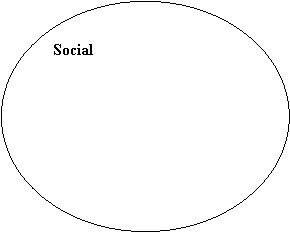
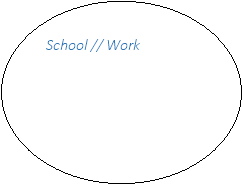
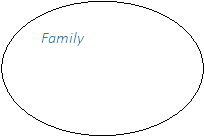


 What Surrouding makes a personality?
What Surrouding makes a personality?
- Speaking. Checking homework.
You had to prepare the materials about famous women of the past millennium. You were devided into four groups:
- Common people (Joan of Arc)
- Rulers (Princess Olha, Margaret Thetcher)
- Scientists (Marie Curie)
- Charity work (Mother Teresa, Diana Spencer)
- Creative task
Now. Look at this diagram. Let’s compare two persons: Diana Spencer and Mother Teresa. Let’s find their common and different features.




- the place of birth
- age
- professions
- appearance
- spheres of activity
- common features of their characters
- Brain-storm.
- What did these women do for people, for mankind?
- Were they successful in their life?
9. Microphone. “What does the word “success” mean for you?”
- Discussion. Group work.
The pupils are split into groups. They get questions for discussion.
T. as you see in order to be successful in life you need a lot of positive features. Divide into groups and discuss them, please.
- Who is a genius?
- What is a talent?
- How many talents can a person possess?
- Is it necessary to be a leader?
The representatives from each group give answers.
12. Now let’s draw a staircase to success.
![]()
![]()
![]()
![]()
![]()
![]()

13. Test on listening
Listen to the tape-scripts with six short texts. They are also about famous women. Some of them we were spoken about, some not. after listening you’ll have to complete the table – write about their country, profession, sphere of activity.
Name ……………………. Surname…………………………. Form……….
|
|
Names |
Countries |
Professions |
Spheres of Activities |
|
1 |
|
|
|
|
|
2 |
|
|
|
|
|
3 |
|
|
|
|
|
4 |
|
|
|
|
|
5 |
|
|
|
|
|
6 |
|
|
|
|
Text 1
She is a well-known woman. Earlier she was the leader of the conservative party, the first woman Prime Minister. She was named “The Iron Lady”. She is an extraordinary woman.
Text 2
She was born in 1961. She studied in private schools in Norfolk, Kent and Switzerland. She was interested in fashion, swimming, listening to pop music. She was well-known for charity work. In 1997 at the age of 36 she died in a very strange accident in Paris.
Text 3
When she was 6 years old, the doctor who was her mother’s friend and was very kind taught her how to work in wax and to make models of parts of the human body. She made her waxwork collection of the rich and famous people and had a great success. In 1835 she opened her exhibition centre in London. Now it is the most popular museum.
Text 4
Her real name was Gabriel. Her parents died when she was a little girl. She grew in poverty. Thanks to the Englishman Arthur Capel she opened a fashion salloon in Paris. In 1928 she produced her famous perfume. In 1955 she designed a new style costume. It is considered the symbol of fashion of the 20th century. She was named the Queen of style. Her house fashion is still popular today.
Text 5
She was born in Scopje, in the capital of Macedonia. At the age of 18 she decided to be a nun. She was the founder of many hospitals and asylums. She spent days and nights sick people in 122 countries. She was awarded the Nobel Prize of Peace for her service to mankind.
Text 6
She was very beautiful. She was one of the brightest stars in the cinema world. She became the new epoch in the history of the own country. She was born in a small provincial town. Her real name was Norma Baker. J.F.Kennedy was her friend.
14. Summing up the results
We have much spoken about famous women of the past millennium. I hope that many pupils of your form will also become famous and the teachers of our school will be proud of you. People of all time admire of famous persons. They devoted them music, paintings, poems. One of them I’d like to suggest you – that is a sonnet by
W. Shakespeare “My mistress eyes are nothing like the sun…” , which you learnt by heart a few years ago.
15. Homework.
write a composition “My road to success”
16. Evaluation.
I hope our lesson was fruitful and interesting. You worked hard during the lesson. What’s your impressions of our work?
Your marks are…….
And now I’d like to share with you Mother Teresa’s Message.
Mother Teresa’s Message
- Life is an opportunity, benefit from it.
- Life is a beauty, admire it.
- Life is a bliss, taste it.
- Life is a dream, realize it.
- Life is a challenge, meet it.
- Life is a duty, complete it.
- Life is a game, play it.
- Life is costly, care for it.
- Life is a wealth, keep it.
- Life is a love, enjoy it.
- Life is a mystery, know it.
- Life is a promise, fulfill it.
- Life is a sorrow, overcome it.
- Life is a song, sing it.
- Life is a struggle, accept it.
- Life is a tragedy, confront it.
- Life is an adventure, dare it.
- Life is luck, make it.
- Life is too precious, do not destroy it.
- Life is life, fight for it.
Subject: Environmental Protection
Objectives: to develop communication skills, critical thinking, cross-cultural awareness through project work;
encourage responsible leadership, stimulate research activities using new technologies;
help pupil to understand the global threats facing our planet and take action to improve the situation
Motto: If you don’t think about the future
You will not have one
John Galsworthy
The nation that destroys its soil –
Destroys itself
Franklin D. Roosevelt
The procedure of the lesson
- Greeting
- Motivation
T. I’d like to start our lesson with the „Earth song“ by M.Jackson. listen to the song, watch the clip and think about the main ideas of it. What is this song about?
Ps: the song is about:
- Pollution of the air by plants and factories;
- Destruction of forests;
- Littering
- Dirty rivers, seas, oceans;
- Extinction of animals and plants;
- The contamination of the soil
- Heating and greenhouse effect
Today we are going to speak about the protection of our environment and about the ways to develop our society without doing
damage to the environment we live in. I hope this lesson will be especially interesting and useful for you.
3. Warming- up.
Tell me, have you ever thought about the planet? Do you believe it’s unique? Why?
(it is beautiful, perfect for people animals and plants, everything is connected, the diversity
is impressive, the planet is full of everything we need, it’s only one that we know where
living beings exist …)
Now let’s remind the vocabulary, which we have learned already.
Клас поділяється на дві команди. Учитель роздає картки обом командам ,де написані
визначення слів і учні намагаються їх відгадати.
Things that you throw away, such as empty bottles, used papers, food that has gone bad,
etc.
(trash)
Air, water and land on the Earth which can be harmed by man’s activities.
(environment)
Something that is not allowed by the law.
( illegal)
Animals and plants growing in natural conditions
( wildlife)
A very big animal that lives in the sea and looks like a fish, but it is actually a mammal.
( a whale)
A large wild animal that has black and yellow lines on its body and is a member of cat family.
( a tiger)
The word, which means the dirty water, air, forests ,etc
(pollution)
To ruin something (to destroy)
The forests, which we know as wet all the time (rainforest)
The gas produced when animals breathe out, when carbon is burned in air, or when animal or
vegetable substances decay
(carbon dioxide)
Now let’s train our tongues. Look at the blackboard . Let’s read the poem all together
Whenever the weather is cold.
Whenever the weather is hot.
We'll whether the weather,
whatever the weather,
whether we like it or not.
4. Check on homework
And your home task was to prepare project works according our main theme “Environment problems” . It’s time to check it and listen to you.
And in our class we have a student who prepared the poster about our previous topic “Endangered species”
ІІ .Main part of the lesson.
1) Vocabulary practice.
Listening comprehension.
Well, I think that the fact that the Earth is unique doesn’t need to be proved, but it will be
interesting to have a look at it from the space. Let’s imagine that we are the cosmonauts and our
spaceship is somewhere in the space. We look out of the illuminator and see our native planet.
But be attentive and we shall do the test later.
The video Let’s save our Earth”.
2) Speaking
Are you impressed? Was it interesting to watch the Earth, the mountains , the forests ,the oceans
and other wonderful places on our planet? And if you were careful in watching, it won’t be
difficult to do the tasks.
Now, let’s come closer to the surface of the Earth. What can we see from the helicopter, for
example?
(Forests, rainforests, deserts, savannas, mountains, fields, gardens, steppes, rivers, seas, cities,
towns, villages…)
Make groups of four and choose one of the things that you have mentioned. Now imagine that
you are the thing you have chosen (for example a forest) and prepare a short presentation of it.
Tell us about the way you look like, about your life, problems, etc. I will give you an example.
Hi! I am a forest. I am very big and strong. I consist of not only trees and bushes, but also
grass, animals, insects, birds. Every season I look different. In spring I am the happiest. The
leaves are fresh and green, the birds begin singing their songs and building nests, the sun
warms me and I am very beautiful. In summer I am thick and full of life. The rains wash me,
the winds strengthen me and my life changes day by day. In autumn I am graceful. My dress
is colourful, I am rich in mushrooms and berries. And I prepare for winter. Like people sleep
at night, I sleep in winter. I need this rest to get ready for the next spring. The most important
problem for me is that people cut down trees and I become smaller. Please, stop it. My inhabitants and I won’t be able to go on if you don’t!
And as soon as you are ready, present your pairs. Don’t forget that you are a group and everyone must take part in work and speak in the presentation.
3) “Telephone game”
It’s time to have some rest. Let’s play a telephone game. Make a line. I whisper the word to the first pupil and each of you repeats it to your neighbour. If you have the same word in the end – you win, if it changes – I win.
Elephant, Earth, pollution
- Developing writing skills.
Look at the picture and match the numbers with the word combinations.
Well, today we were speaking about the world. We watched at it from the space, we imagined
ourselves different parts of the landscape, we learned much about the animals. But where is our place in this world? Do people stay aside? Of course not. We are the part of the world like
everything else. So, we have to think about our future and do something.
That’s why British and American children learn a lot about the environment. All of them
remember three Rs: reduce, reuse, recycle.
III.Conclusion
1) Summarizing
As a summary of the lesson listen to the quotation and say what you think about it. Does it relate to our lesson?
“The deer, the horse, the great eagle, these are our brothers. The Earth is our mother. All things are connected like the blood which unites one family.”
Can we say that we are the family? That animals are also our relatives?
2) Evaluation.
3) Homework.
Write a short report about your school ecology activity. And be ready for the test.
Have you ever dyed Easter eggs? In Ukraine people have been dyeing eggs for hundreds of years. These special eggs are called pysanky. They are decorated with very fancy, intricate designs. In fact, no two pysanky are alike! Pysanky contain symbols and colors that have special meanings. Each is
designed to communicate special wishes for the person who will receive the egg. Pysanky are given to the family members and friends as gifts.
STEP 1. Dividing the egg into geometrical parts.
STEP 2. Drawing the symbols:
FLOWERS: beauty, children, wisdom, love, charity
FRUITS: knowledge, health, wisdom
TREES: long life, good health, strength, youthfulness
ANIMALS: prosperity, wealth
BIRDS: fulfilment of wishes, spring, good harvest, protection
SUN: growth, good fortune
BEE: hard work, pleasantness
WATER: wealth

STEP 3. Coloring the eggs:
Colors are a very important part of the message of the pysanka. Each color has a special meaning:
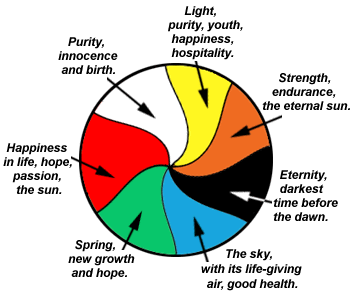
ST. VALENTINE’S DAY
1.Decorate the classroom for this occasion. Two weeks before start a contest for the best Valentine’s card and for a poem or translation of a piece of poetry devoted to the topic. Make an exhibition of the best works.
2. Presentation of the holiday symbols:
HEART.A long time ago, people believed that all the emotions were found in the heart. In later years they thought only the emotion of love was connected with the heart. The heart is still a symbol of love, and it is also a symbol of Valentine’s Day.
RED ROSE. The rose was the flower of Venus, the Roman goddess of love. Red is a color that stands for strong feelings. This is why the red rose is the flower of love.
RIBBONS. Ribbons go back to the days when ladies gave ribbons to their favourite knights when they went to war.
RINGS. In some countries men and women exchange rings when they become engaged or married. Valentine’s Day is a popular day for giving an engagement rings.
CUPID. Cupid is a son of Venus, goddess of love. He could cause people to fall in love by piercing them with one of his magic arrows.
DOVES. Doves were thought to be birds of Venus. They remain with the same mates all their lives. The males and females both care for their babies. These birds are symbols of loyalty and love.
GLOVES. Years ago, when a man proposed marriage to a woman, he “asked for her hand”. The hand became a symbol of marriage and love. Very soon gloves also become a symbol of love.
3.You can give your students a chance to listen to a song about love (eg. “And I love her” by the Beatles) And after that students can do a “fill-in-test”
4.Game “Find your pair”
ROMEO—JULIET
OTHELLO—DESDEMONA
NAPOLEON—JOSEPHINE
ADAM—EVE
TARZAN—JANE
JOHN LENNON—YOKO ONO
RHETT BUTTLER—SCARLET
5.Put the question “What is love?”
Give some dictionary definitions. Then ask students to create their own definition of love. You can use the poem “Love is…” by Greg Scelsa.
6.The next question is “Why do people love each other?” Start with the poem “I love you more than applesauce” by Jack Prelutsky and after the discussion ask students to create their own “I love you more than…” poem.
7. Don/t forget to praise the winners of the contest somehow and to show the best works.
8. Finish your class with some karaoke song
I JUST CALLED... (by Stevie Wonder)
No New Year’s Day to celebrate,
No chocolate girls or candy hearts to give away.
No birds of spring, no songs to sing,
In fact it’s just another ordinary day.
No April rain, no flowers bloom,
No wedding Saturday within the month of June,
But what it is, is something true
Made up of these three words that I must say to you.
I just called to say “I love you”,
I just called to say, how much I care,
I just called to say, “I love you”,
And I mean it from the bottom of my heart…
2.5. Progect Making a sandwich
(A.Nesvit—p.71)
AIM:to use topic vocabulary while making sandwiches.
A.Out of class: Prepare the ingredients:
-two slices of your favourite bread;
-mustard;
-mayonnaise;
-one or two slices of your favourite cheese;
-tomatoes;
-lettuce;;
-two slices of ham;
-a drink of your choice/
You need:
-an apron;
-some napkins;
-a knife;
-a fork;
-a cooking board.
B.In class: before you cook
1. Wash your hands.
2. Wash the vegetables and let them dry.
3. Cut bread , cheese and ham.
4. Follow the steps to make a sandwich.
Speak English while cooking!
STEPS
1.Take two slices of your favourite bread.
2.Put mustard on the bottom slice of bread, and mayonnaise on the top slice.
3.Choose your cheese for the sandwich. Put some cheese on the bread.
4.Put one or two slices of tomatoes on top of cheese.
5.Put a few leaves of lettuce on top of the tomatoes.
6.Lay two slices of thin ham on top of the lettuce. Gently fold the ham in half and lay them next to each other.
7.Lay the slice of bread with mustard on top of the sanwich.
8.Serve the sandwiches on a medium sized plate.Served with chips and a drink of your choice.
C.In class: TREAT YOUR GUESTS!
-Your classmates are your guests. Treat them to the sandwiches you’ve made.
Enjoy your meals!
-Vote for the best cook.
2.6. Project Adverticing: pros and cons
1.WORK IN PAIRS
Draw word-nets on sheets of paper I’m going to give you. The word-net are different for each pair.
A.What is advertised most of all?
B. Where can we see adverticement?
C.Adjectives describing good advertisements
D. Ajectives describing bad advertisements
E. Express your positive opinion about advertising
F.Express your negative opinion about advertising
2.VOCABULARY WORK
A.Give synonyms
Exciting—attractive, catchy, amusing
Splendid—superb, perfect, excellent, fantastic, great, cool, terrific
Annoying—irritable, disappointing
I’m not interested in it.—I’m bored with it. I’m fed up with it. I’m indifferent to it.
B.Give opposites
This advert is interesting—boring
It is splendid—horrible, awful
It is enjoyable—annoying
This commercial is relaxing—depressing
I’m interested in commercial—I’m indifferent to it
I love it—I hate it
It is informative—It is senseless
3.MATCHING ACTIVITY
We have a lot of commercials on our TV. Everything is advertised. Sometimes we see logos of different products, sometimes—slogos. I’ll give you set of cards(they are of two colours—green and yellow). You can see logos on the yellow cards and slogos on the green ones. Your task is to find a logo to a slogo,and match them.
A.Sprite—It tastes cold
B.Bud—The king of beer
C.Kodak—Real photos—real life
D.LG—Life is good
E.Our radio—The nearest station
F.Millennium—The art of chocolate
G.Korona—The taste of desire
H.Rexona—The forse of extraprotection
4.BRAIN STORM. Answer the following questions
-Where are more advertisement: on state-owned or commercial channels?
-What is being advertised on TV most of all at present?
-What is your favourite advertisement(if there is any)?
-Are there any commercials that are difficult to understand? Can you give any examples of dull adverts?
-What would you advise people who can’t stand watching commercials?
-What is your opinion about advertising in mass media? Do you like it? Is it necessary?
5.PROBLEM SOLWING (group work)
Now I am going to divide you into 3 groups. Discuss in your groups the following questions. Share your ideas with other members of your group. Then choose a speaker to express your point of view.
GROUP1.What are good points about advertising?
GROUP 2. What are bad points of advertising?
GROUP3. Is advertising necessary in mass media nowadays?
6.CREATIVE WRITING( poetry)
Imagine you are a poet! Your task is to write an advertising poem. Here is the pattern:with the first letters down on the left you can read the advertising word. Write a word, phrase or sentences beginning with that letter
Example: Cool
Ocean of pleasure
Cold is better
At home, at schoool, everywhere
Cans and bottles
Oh I enjoy it
Lovely drink
A real paradise.
2.7. RAINBOW. Summer camp project.
This activity is for the pupils of primary school at their first day .
1.Vocabulary work:
--What colours do you know?
--What is white? (The snow is white)
--What is yellow? (The sun is yellow)
--What is green? (The grass is green)
--What is blue? (The sky is blue)
2.Warming-up
--How many colours has the rainbow?
--What are they?
3.Speaking.
--My name is...
--I am 8/9
--My favourite sport is football.
--I have a pet. It is a cat. Its name is Blacky.
--My favourite colour is yellow.
4.Painting
After speaking each pupil put his hand into the plate with his\her favourite colour and make the mark of painted hand on the poster in the form of rainbow.
5.Singing the song
Sun and rain
Rain and sun
They make the rainbow
The rainbow in the sky
The colours of the rainbow
Are all around me
The colours of the rainbow
Are beautiful to see
Conclusion
In the given work I have highlighted the importance of the project work in teaching English, discovered how it influences the students during the educational process and if this type of work in the classroom helps to learn the language.
On the basis of the literary sources studied we can come to the following conclusions that project work has advantages like the increased motivation when learners become personally involved in the project; all four skills, reading, writing, listening and speaking, are integrated; autonomous learningis promoted as learners become more responsible for their own learning; there are learning outcomes-learners have an end product; authentic task send therefore the language input are more authentic; interpersonal relations are developed through working as a group; content and methodology can be decided between the learners and the teacher and within the group themselves so it is more learner-centred; learners often get help from parents for project work thus involving the parent more in the child's learning; if the project is also displayed parents can see it at open days or when they pick the child up from the school; a break from routine and the chance to do something different.
The types of projects are information and research projects, survey projects, production projects and performance and organizational projects which can be performed differently as in reports, displays, wall newspapers, parties, plays, etc.
The organization of project work may seem difficult but if we do it step by step it should be easy. We should define a theme, determine the final outcome, structure the project, identify language skills and strategies, gather information, compile and analyse the information, present the final product and finally evaluate the project.
The project work supported the students´ autonomy of decision and solution of problems in doing projects.
Therefore I can conclude that I am a big supporter of project work at schools and I think it has its significant place next to traditional teaching methods. Doing the project is positive motivation for the students to reach better results in English.
The objectives of the paper were to highlight the importance of the project work in teaching English, to discover how it influences the students during the educational process and if this type of work in the classroom helps to learn the language.
On the basis of the literary sources studied we can come to the following conclusions that project work has advantages like the increased motivation when learners become personally involved in the project; all four skills, reading, writing, listening and speaking, are integrated; autonomous learning is promoted as learners become more responsible for their own learning; there are learning outcomes -learners have an end product; authentic tasks and therefore the language input are more authentic; interpersonal relations are developed through working as a group; content and methodology can be decided between the learners and the teacher and within the group themselves so it is more learner-centered; learners often get help from parents for project work thus involving the parent more in the child's learning; if the project is also displayed parents can see it at open days or when they pick the child up from the school; a break from routine and the chance to do something different.
The disadvantages of project work are the noise which is made during the class, also projects are time-consuming and the students use their mother tongue too much, the weaker students are lost and not able to cope with the task and the assessment of projects is very difficult. However, every type of project can be held without any difficulties and so with every advantage possible.
The types of projects are information and research projects, survey projects, production projects and performance and organizational projects which can be performed differently as in reports, displays, wall newspapers, parties, plays, etc.
Though project work may not be the easiest instructional approach to implement, the potential pay-offs are many. At the very least, with the project approach, teachers can break with routine by spending a week or more doing something besides grammar drills and technical reading.
The organization of project work may seem difficult but if we do it step by step it should be easy. We should define a theme, determine the final outcome, structure the project, identify language skills and strategies, gather information, compile and analyze the information, present the final product and finally evaluate the project. Project work demands a lot of hard work from the teacher and the students, nevertheless, the final outcome is worth the effort.
To conclude, project work is effective, interesting, entertaining and should be used at the lesson.
- Slide presentation
What makes a good citizen?
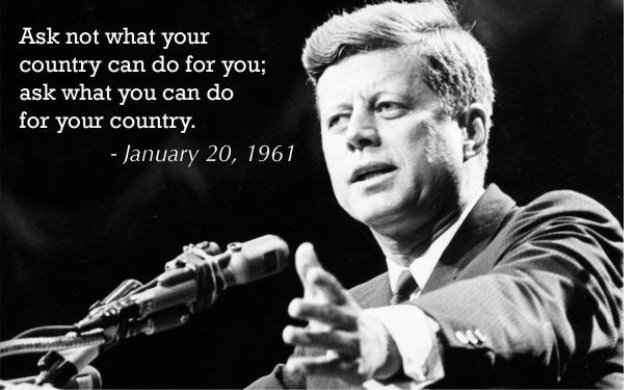
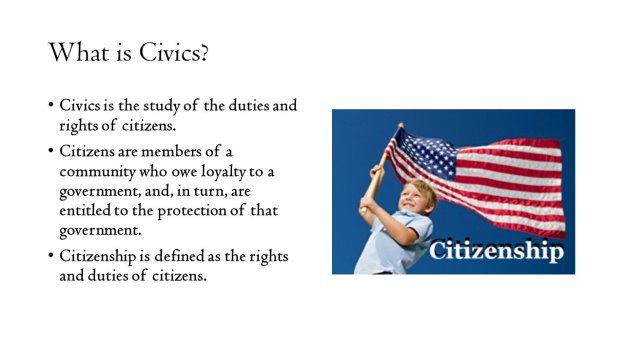
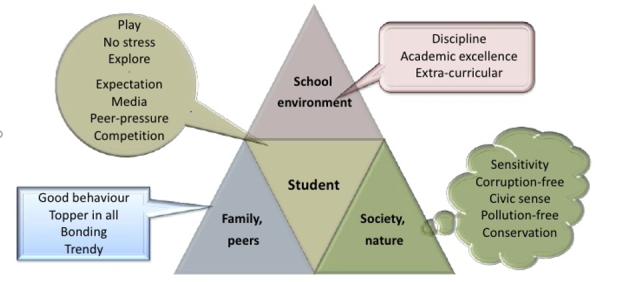
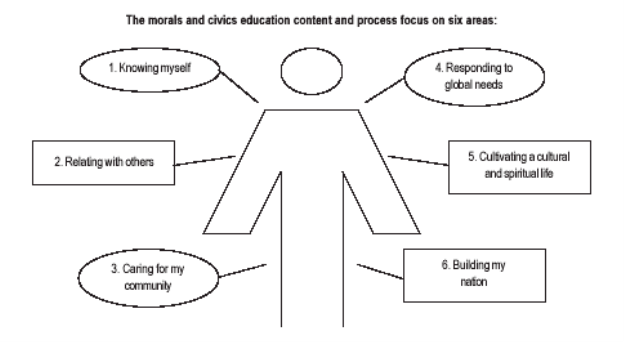
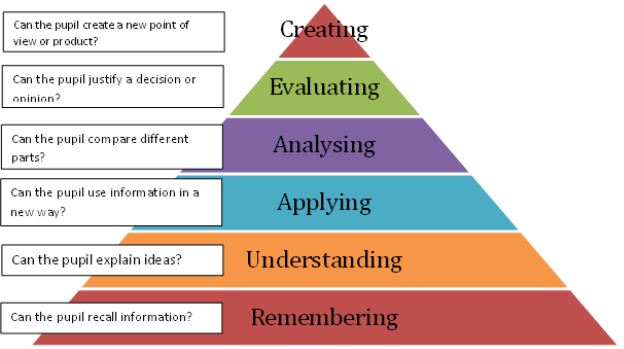
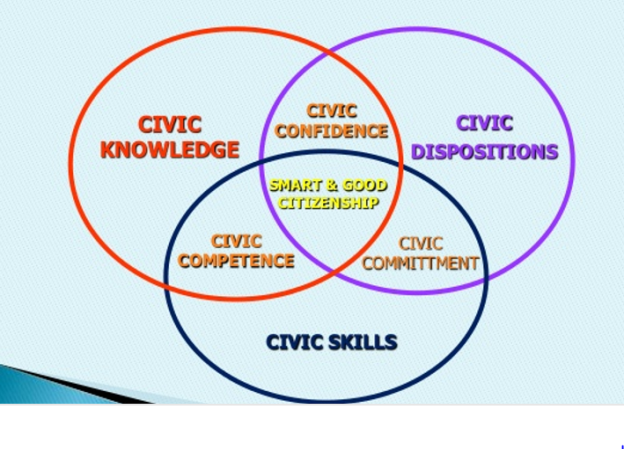
2. Rainbow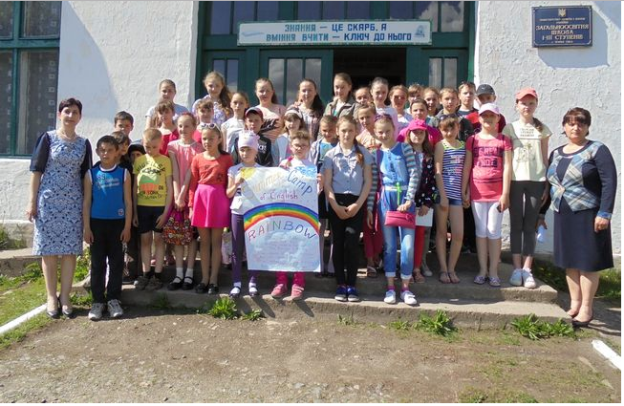
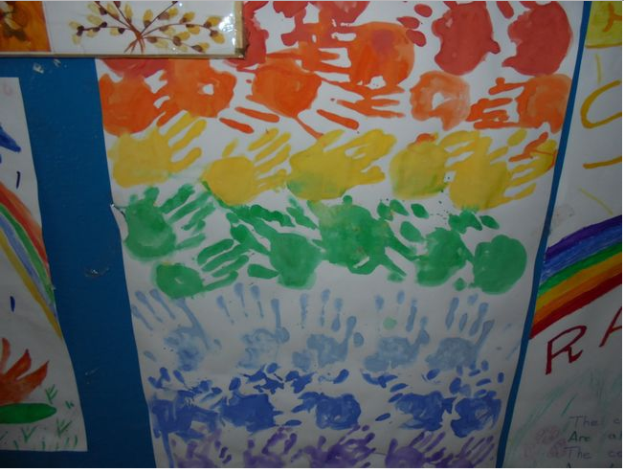
LIST OF REFERENCES
STOCKTON, J. M.: Project work in education. Boston, New York, Chicago: Houghton Mifflin Company, 1920.
KRATOCHVÍLOVÁ, J.: Teorie a praxe projektové výuky. Pedagogická fakulta Masarykovy univerzity, Katedra pedagogiky, Brno 2009.
FRIED-BOOTH, D. L.: Project work. Resource books for teachers. Oxford University Press, 1986.
LEGUTKE, M., THOMAS, H.: Process and experience in the language classroom. Longman Group UK Limited, 1991.
HAINES, S.: Projects for the EFL classroom. Thomas Nelson and Sons Ltd, 1989.
GILLERAN, A.: Learning with e-Twinning, A Handbook for Teachers. Central Support Service for eTwinning, Brussel 2007.
OXFORD ADVANCED LEARNER´S DICTIONARY, the sixth edition, Oxford University Press, 2000.
OXFORD WORDPOWER DICTIONARY, Oxford University Press, 2006.
ADVANCED LEARNER´S ENGLISH DICTIONARY, Harper Collins Publishers, 2003, the fourth edition.
CAMBRIDGE ADVANCED LEARNER´S DICTIONARY, Cambridge University Press, 2003.
THE NEW PENGUIN ENGLISH DICTIONARY, Penguin Group, 2000.
Skehan, P. (1998). A cognitive approach to language learning. Oxford: Oxford
University Press.
Глазкова Н.О. Проектна технологія на уроках англійської мови / Н.О. Глазкова. Режим доступу: http://www.nbuv.gov.ua/portal/soc_gum/pfto/2010_6/files/PD610_18.pdf
Логвин В. М. Метод проектів у контексті сучасної освіти//Сучасні шкільні технології.Ч.2. – К.,2004.
Нагач М.В. Застосування методу проектів у вивченні іноземних мов / М.В.Нагач. http://www.nbuv.gov.ua/portal//Soc_Gum/Vchdpu/ped/2012_101/Nagach.pdf
Несвіт А.М. Англійська мова – підручник для 5 класу, К.,Генеза,2013. – ст.72
Олійник І. Використання методу проектів на уроках англійської мови / Ірина Олійник // Профтехосвіта. – 2012. №10 (46), с.29-33
Пассов Е.И. Основы коммуникативной методики обучения иноязычному общению М.: Русский язык, 1989. — 276 с.
Полат Е.С. Метод проектов на уроках иностранного языка/ Иностранные языки в школе - № 2, 3 - 2000 г.
Яковлєва Т.В. Використання інноваційних технологій при вивченні англійської мови / Т.В. Яковлєва. – http://osvita.ua


про публікацію авторської розробки
Додати розробку
